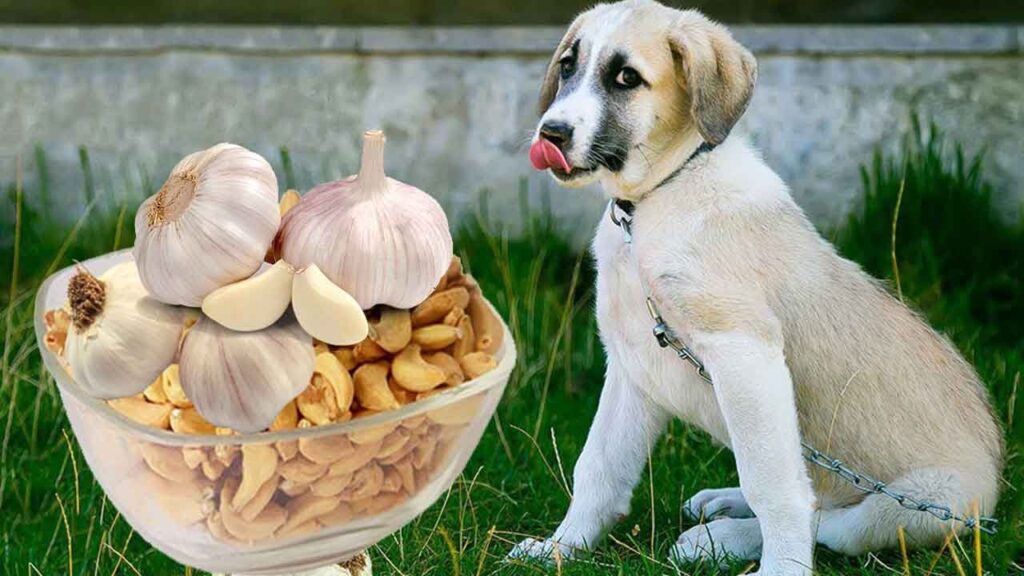Is Garlic Bad for Dogs? Toxin or Medicine
There are many food items including fruits, vegetables and forms of protein that are beneficial both; for you and your dog. Garlic is known to be one of the wealthiest items to be included in your meal. It is a part of the onion food chain called ‘Allium’ and is used in various food items for cooking and seasoning.
Did you know that while garlic is full of advantages for the human body, it can be a toxin for your dog if consumed in a large amount?

Is garlic bad for dogs?
Table of Contents
To answer this, no, it’s not. This has often come as a shock to many people and dog owners. Most people believe that their dog’s body also works just like them and anything that suits them will work for their pet too. It is indeed very beneficial for humans, but garlic is bad for dogs’ health as it is a toxin.
Garlic contains thiosulfate which is a toxin for the dog’s body and good for humans at the same time. Garlic tends to cause serious health harms for dogs.
Side effects of garlic in dog’s diet:
The metabolism of dogs is different from humans and when they are fed garlic, it can cause serious health issues.
- Consumption of garlic in dogs can cause the red blood cells to rupture which further leads to anemia.
- Some dogs have also reacted to garlic in the form of vomiting and diarrhea.
- Nausea and abdominal pain have been observed too.
- There is a risk of abnormal breathing and heart rate.
- Weakness has been observed in some cases and there have been several collapse incidents as well.
- Bad breath is another reason why you should avoid garlic in your dog’s meal. Garlic has an unfriendly odour and you don’t want to be away from your dog because of their bad breath.
What is anemia in dogs caused by garlic consumption?
The job of red blood cells is to provide oxygen to the body and remove carbon dioxide. This is the most essential functioning of any living being’s body. When garlic is consumed in dogs, it can rupture red blood cells which means there is difficulty reaching oxygen to the body. This can cause fatigue, immune diseases, pale gums and abnormal breathing in dogs.
What happens if my dog accidentally consumes garlic?
While garlic is not safe for your dog, if it has been accidentally consumed, there is no need for panic unless the amount was too large. If your dog has eaten one or two cloves of garlic, most certainly, it is not going to show any side effects and will not cause any emergency. The best you can do is check how much garlic has been consumed and deal with the situation accordingly. It is highly advised to contact your veterinarian and inform them of the best medical advice.
It is also important to remember that different dogs react to garlic differently. Some dogs have also been seen responding to a very small amount of garlic but those are rare cases.
Symptoms of garlic poisoning in dogs:
- Cramps/Pain
- Rapid breathing
- Weakness
- Pale gums
- Diarrhea and vomiting
- Anemia
- Seizure
How to diagnose garlic poisoning if your dog ate it?
In most cases, physical examination, lab tests, and the history of your dog are taken as the first step. For accurate physical examination, do not try doing it yourself. Take your dog to the veterinarian and describe your dog’s case and condition very accurately. The veteran will further check their vitals including heart rate, blood pressure, breathing, temperature etc. This will indicate how bad or calm the situation is.
Then, some laboratory tests may be performed, showing the number of red blood cells, HB (Haemoglobin level) and will make it easy to rule all the assumptions and lead to the actual problem. Usually, if the number of red blood cells is less than normal, It means that anaemia may have been caused due to garlic consumption.
Treatment:
The first treatment includes trying to induce vomiting so the toxin can leave your body. If that does not happen, charcoal is activated into the dog’s body, which helps detoxify the body. But, the charcoal only works when the garlic consumption is recent.
If you take your dog to the veterinarian a bit too late, the possibility of inducing vomiting and activating charcoal is no more possible. In this case, a saline solution treatment or an oxygen therapy will take place after hospitalization. In the worst cases, blood transfusion has also been performed to remove the dogs’ body’s garlic toxin.
As a follow-up routine, your veterinarian will most probably advise some rest for your dog and decrease exercise activity.
They might also suggest keeping your dog indoors mostly as some plants and vegetables grown outside can also be toxic for the dog and if they’re consumed, the situation will get worse and the recovery won’t happen. Strick monetisation is required after the treatment.
If garlic is unsafe for dogs, why do some people suggest its benefits?
Some experts indeed suggest garlic’s benefits for dogs but the benefits can only be attained in a very low quantity consumption of garlic. This also comes as a risk because, in some dogs, even the smallest amount can hurt too. So, the idea of risking their health when there are so many other vegetables to gain benefit from does not sound too good.
In conclusion, while garlic is an amazing component of humans’ health, it is risky for your dogs and the best way is rather to avoid it in their meals. The debate of how much garlic is toxic for your dog has been going on for long enough but it takes away the truth that garlic can cause poisoning in dogs. In some dogs only a large amount causes harm and in some dogs, even a small amount can be a risk. The best way is to avoid garlic and research other food items that will only provide benefits to their health and contact your veterinarian before making any changes to your pet’s diet. If you see someone using garlic as a regular part of their dog’s meal, you must inform them of the risk.


